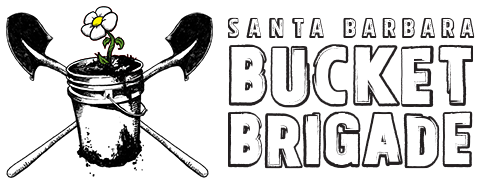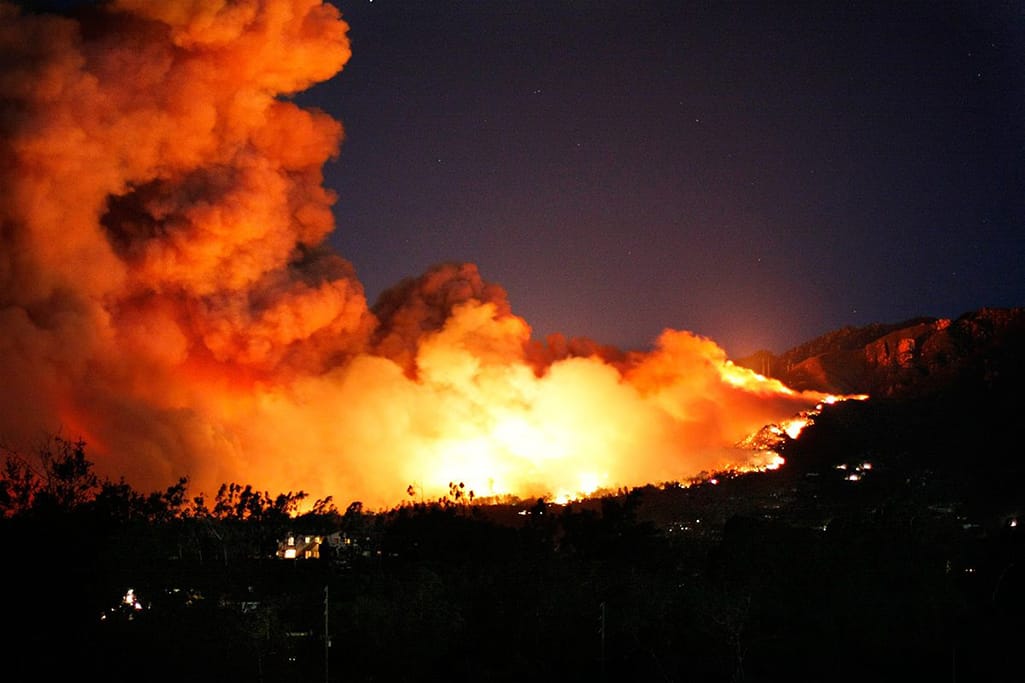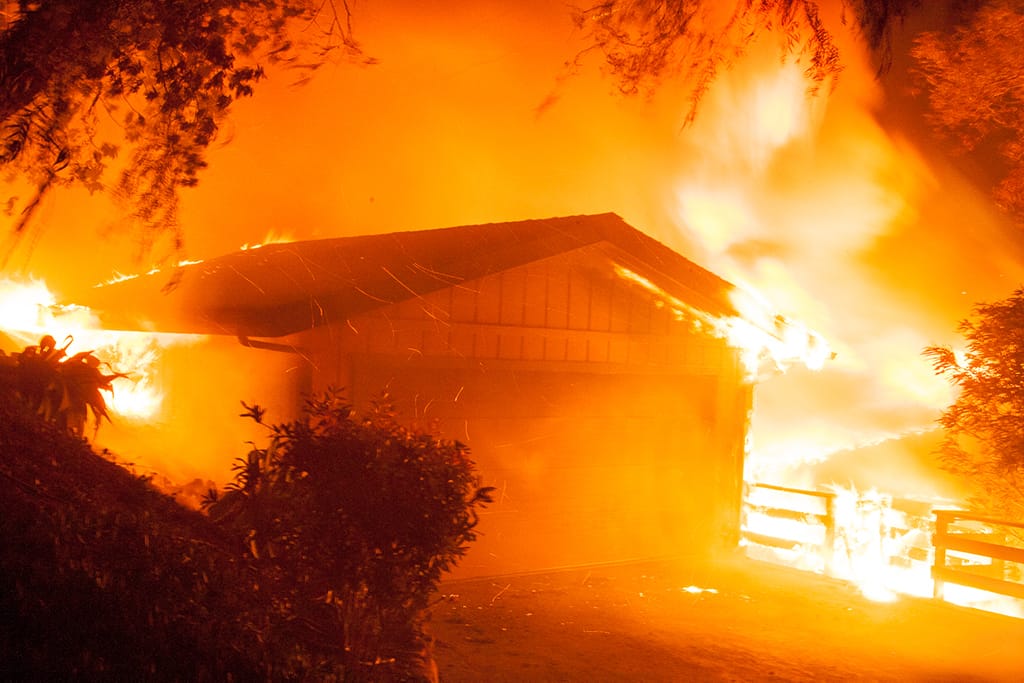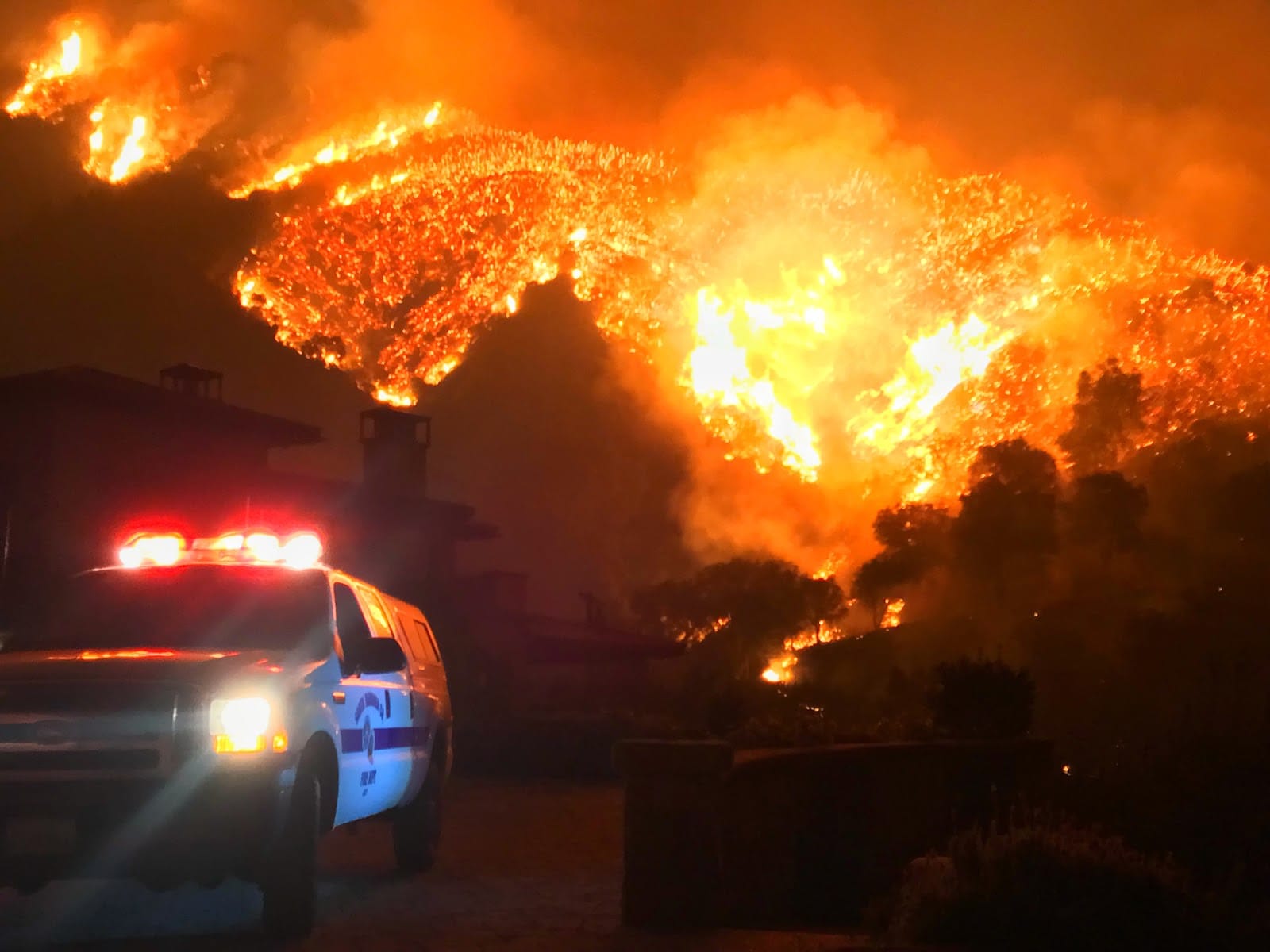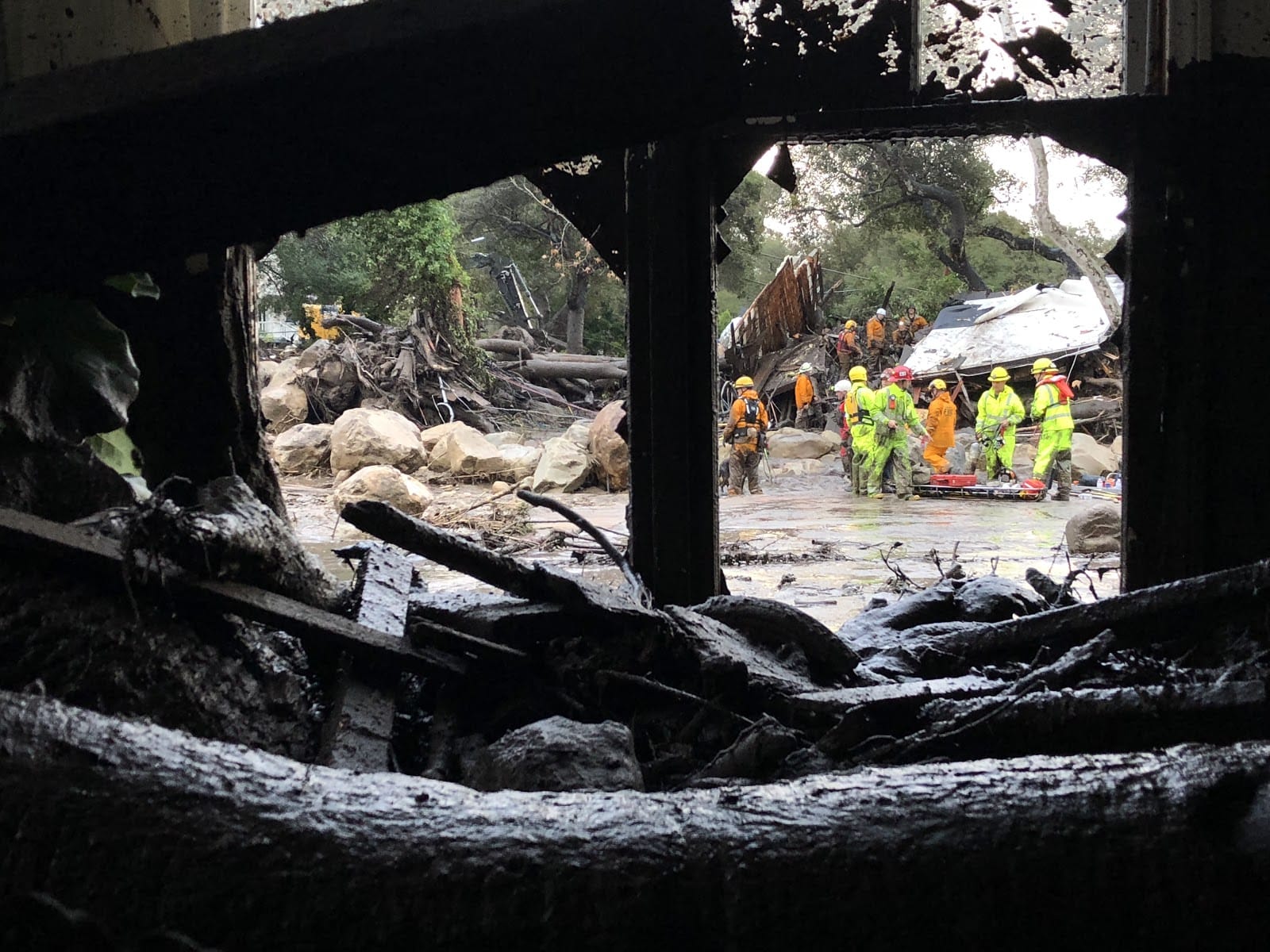The Birth of the Brigade
What does community resilience mean in 2020?
Major natural disasters in the United States and around the world are becoming more frequent and destructive. During the past five years, the average rate of billion-dollar natural disasters in the U.S. has more than doubled. In 2018 in California alone, more than 8,500 wildfires burned a record 1.9-million acres, causing an estimated $3.5 billion in damages, and killing 105 people, including six firefighters. Here in Santa Barbara, we’re all too familiar with natural disasters. And we’re still recovering from the back-to-back Thomas Fire and 1/9 Debris Flow.
The Santa Barbara Bucket Brigade believes community resilience means using lessons from the past to strengthen and prepare right now. Resilience means weaving a genuine community safety-net, neighborhood by neighborhood, complete with community-building, education, prevention, strategies for evacuation, and pre-planning for cooperative disaster relief and recovery. We recognize that disasters don’t discriminate by neighborhood and that building resilience capacity involves partnering with nearby communities to prepare and respond together. Disasters repeatedly teach us that there is strength in numbers. The first and greatest human superpower has always been cooperation. The Bucket Brigade approach teaches neighborhoods how to combine that human superpower with local knowledge and wisdom to weave a real community safety net.
At the grassroots level, the Bucket Brigade is dedicated to helping neighborhoods throughout Santa Barbara County to prepare for natural disasters and community crises by learning how to work together.
Specifically, we’re starting with the most vulnerable residential areas in the wildland-urban interface and along creeks and floodplains, and we’re asking: How prepared do you feel? Does your neighborhood have a resilience program? Who would you turn to if a disaster destroyed your neighborhood? Would training and organization help? Are you connected to nearby neighborhoods that you could call on in a time of need?
For residents in many areas, answering these questions is a wakeup call.
A HISTORY OF RESILIENCE
As daunting as community preparedness may seem, success stories exist right here in Santa Barbara — real grassroots neighborhood response to natural disaster. We Santa Barbarans have learned a lot out there on the burned hillsides, in the floodwaters, and while digging out of the rocky mudflows. And the lessons we’ve learned are now being ushered into the spotlight at the highest worldwide levels of natural-disaster response humanitarian aid.
According to the Center for Disaster Philanthropy, efforts “fueled by the World Humanitarian Summit in 2016, aim to return local actors, whether civil society organizations or public institutions, to the center of the humanitarian system with a greater role in humanitarian response. In short, the focus becomes centered on local decision-making. Power is in the hands of those most affected by [disaster].”
The United Nations, Humanitarian Policy Group, and FEMA have also arrived at this same conclusion.
Here in Santa Barbara, way back in 1995 and way up on Mountain Drive, a large and prepared group of neighbors reached that conclusion, too.
The Mountain Drive Community Association (originally formed in 1988) came together in part to prepare for a worst-case scenario. Residents knew the long history of destructive wildfires common to the Santa Barbara front country — Coyote Fire (1964), Romero Fire (1971), Sycamore Canyon Fire (1977), and the Paint Fire (1990). They also remembered the floods and landslides, especially in 1969, 1978, 1983, and during the record-breaking rainfall of January 10, 1995.
After that El Niño storm of 1995, “all of Mountain Drive from Cold Spring to Gibraltar was knee- to waist-deep in mud,” remembers Bucket Brigade cofounder Abe Powell. “I couldn’t drive out of my driveway for seven days.” Pretty much cut off from the rest of Santa Barbara — and knowing that government agencies don’t perform cleanup of private property — Mountain Drive residents pooled their resources, set aside their differences, and dug each other out. It was a grand display of neighbors helping neighbors. This experience brought the community closer together, demonstrated the value of cooperation, and galvanized their resolve to work harder to prepare for the next disaster.
GETTING TO KNOW YOUR NEIGHBORS
In the following years, the Mountain Drive Community Association (MDCA) teambuilding and emergency planning became more formalized and more friendly as membership increased dramatically. They hosted more neighborhood get-togethers and events. They got to know and trust each other. They cooperated to develop evacuation strategies. They maintained and upstaffed their own volunteer fire department. The MDCA created a community phonebook — everybody got a copy — with names both alphabetized and organized geographically, the latter of which proved critical during the opening moments of the Tea Fire.
In the late afternoon of November 13th 2008, a handful of MDCA members were playing Ultimate Frisbee near Westmont College when they saw the fire’s first terrifying run across the mountainside above Montecito. They could have scattered, every man and woman for his- or herself. But they were ready, and they had a plan. At the nearest home, they grabbed the neighborhood phonebook and called everybody living in the fire’s path, in order of proximity to the growing blaze. This saved lives. (The government’s reverse 9-1-1 call to evacuate arrived the next morning, after 210 homes had burned.)
As that harrowing evening unfolded, they organized a complete evacuation of the entire Mountain Drive community in less than an hour. Because they were prepared, they knew who was going to need the most help, namely the elderly, a man in a wheelchair, and families with children. At the same time, the Type 6 engine belonging to the volunteer fire department was destroyed by the blaze — but three volunteer firefighters jumped in an auxiliary vehicle to flank the fire and save four homes.
That nobody died is a testament to the community’s preparedness. In the face of sudden and ferocious wildfire — Santa Barbara’s most common natural disaster — they had cooperated and executed a plan to save themselves. And in the aftermath — entire lives were turned upside down overnight — it had brought them even closer together.
“I’ve been amazed by the resilience of the fire victims and the generosity of the community around them,” wrote singer-songwriter Glen Phillips on his website five days after the fire. “It may be something of a cliche, but it’s good to see that the toughest of times seem to bring out the best in most people.” His perspective would be reinforced just a few days later.
A forecasted El Niño rainstorm threatened the still-smoldering mountainsides in the scar of the Tea Fire. The Mountain Drive community rallied again, calling for help based on relationships it had built with government agencies, local nonprofits, and nearby neighborhood associations. Santa Barbara County Flood Control dropped off 288 tons of sand and 11,000 sandbags, and the MDCA, with the help of the Montecito Association, deployed more than 300 volunteers in one day to help protect properties and roadways from potential flooding and debris flows as the Red Cross set up an aid station and served refreshments and local restaurants and churches donated lunch.
Led by the MDCA, this organized and cooperative disaster-response effort made it easy for government, NGOs, and private citizens to provide help. It made sure that resources were being directed where and when they were most needed. This is the foundation of a strong community ground game.
The MDCA wanted to be the arbiter of its own recovery effort. Its members knew their neighborhood best, and they knew what they needed; they had been preparing and cooperating for years, and now they were ready to work together to achieve a full recovery. Part of the plan included a new website where victims could list specific needs (such as temporary housing, winter raincoats, and pet food) and contributors could fulfill those needs and/or list specific resources they had to offer (such as an extra vehicle, grocery gift cards, or expertise in navigating insurance claims). The site also served as a bulletin board of upcoming meetings, Red Cross updates, and FEMA resources.
POST-DISASTER COOPERATION
Together, they made it through fire and flood. But there was still a lot of work to do. In the coming years, they fought insurance companies that were stalling, lowballing, or both. They battled with the local fire department, which at the time insisted that residents could not rebuild until their driveways were widened to better accommodate the district’s engines. The MDCA position was that the rebuilding process could not wait for wider driveways and roads. Residents didn’t have homes to live in, and they were in danger of losing everything. The MDCA didn’t have a problem with safer ingress and egress for first responders, but it did protest the timing of such costly and time-consuming requirements as residents struggled to put roofs over their heads after a massive wildfire.
The MDCA became more active in the local planning process, namely at the Mountain Drive Architectural Review Board and the Montecito Planning Commission. As the community began to rebuild, the MDCA wanted to be at those tables. The participation paid off as property owners learned they could legally rebuild using their existing foundations (so long as the fire damage wasn’t too extensive), saving tens of thousands of dollars per property.
In 2012, Powell ran successfully for an open seat on the five-member fire district board of directors and helped to marshall leadership changes, with new arrivals keen on advances in community preparedness along the wildland-urban interface.
By 2016, the district had completed a new Community Wildfire Protection Plan (CWPP), which brought together public agencies and private property owners to create a wildfire buffer zone between the heavily forested mountains and Montecito’s most vulnerable neighborhoods. The plan’s ambitious brush-clearing effort certainly wouldn’t be able to stop a firestorm fueled by 50-mph winds and several years of drought, but it would create open routes in and out of vulnerable neighborhoods and anchor points where firefighters felt safe making a stand to protect homes.
In December 2017, the CWPP was put to the ultimate test as the Thomas Fire — then the biggest wildfire in state history — came to town. Computer-generated wildfire models had predicted that a fire of that magnitude would destroy hundreds of Montecito homes and businesses. In reality, the only seven primary residences were lost.
Less than a month after the Thomas Fire scorched the Montecito mountains, the community was hit by the worst natural disaster in Santa Barbara County history. Triggered by intense rainfall, the debris flow of January 9, 2018, killed 23 residents and destroyed or damaged upward of 500 homes. In the aftermath, government agencies were stretched thin and also unable to respond directly on private property, where hundreds of homeowners — their houses and yards flooded with mud, boulders, trees, and wreckage from upstream neighborhoods — were overwhelmed by the magnitude of the cleanup. At the same time, they struggled with post-traumatic stress and grief.
In an act of neighbors helping neighbors, a handful of women and men sent out a call for volunteers to dig out homes. With lessons learned from Mountain Drive fires and floods, and with dozens of volunteers showing up with shovels on the very first day, the seed of community self-rescue, planted back in the El Nino year of 1995, grew to become the Santa Barbara Bucket Brigade.
Within two months, 2,000 volunteers had signed up to help — organized, trained, and deployed throughout Montecito’s most-impacted neighborhoods to remove mud and debris from private residences and to restore public property and easements. Bucket Brigade volunteers have cleared more than 100 properties, saved more than 1,000 inundated native oak trees, and restored nature preserves and trail systems across more than 60 acres of public open space.
[MORE BUCKET BRIGADE WORK SHOTS AND NEWS CLIPS]
THE FUTURE IS NOW
The MDCA and the Santa Barbara Bucket Brigade proved that neighborhood resilience programs can and do work. Climate change has made the need for resilience greater than ever. Now, our job is growing. The Bucket Brigade is helping individuals, neighborhoods, and communities get prepared. From fires to floods to Southern California’s next big earthquake, the threat is real and the time for action is now.
We offer organization, planning, and training, from navigating homeowners and renters insurance to making sure communities leave no neighbor behind in an evacuation. We can help recruit, train, and deploy volunteers for neighborhood evacuations and post-disaster cleanup and recovery. Working together we can build a strong ground game, a foundation of community resilience.
There’s no question this is needed. All of this — and more — can be accomplished when we work together. Join us!
